A Tunable Beamforming Ferroelectric Lens for Millimeter Wavelength Ranges
Abstract
1. Introduction
2. Materials and Methods
2.1. Principle of Ferroelectric Lens Operation
2.2. Topology of the Control Electrodes
2.3. Ferroelectric Lens Model
2.4. Materials
3. Results and Discussion
3.1. Results of Simulation
3.2. Results of Measurements
4. Conclusions
Author Contributions
Funding
Acknowledgments
Conflicts of Interest
References
- Boccardi, F.; Heath, R.W.; Lozano, A.; Marzetta, T.L.; Popovski, P. Five disruptive technology directions for 5G. IEEE Commun. Mag. 2014, 52, 74–80. [Google Scholar] [CrossRef]
- Shoaib, S.; Shoaib, N.; Khattak, R.; Shoaib, I.; Rehman, M.; Yang, X. Design and development of MIMO antennas for wigig terminals. Electronics 2019, 8, 1548. [Google Scholar] [CrossRef]
- Yau, K.A.; Qadir, J.; Wu, C.; Imran, M.A.; Ling, M.H. Cognition-Inspired 5G Cellular Networks: A Review and the Road Ahead. IEEE Access 2018, 6, 35072–35090. [Google Scholar] [CrossRef]
- Naqvi, A.; Lim, S. Review of recent phased arrays for millimeter-wave wireless communication. Sensors 2018, 18, 3194. [Google Scholar] [CrossRef] [PubMed]
- Marcus, M.; Pattan, B. Millimeter wave propagation: spectrum management implications. IEEE Microw. Mag. 2005, 6, 54–62. [Google Scholar] [CrossRef]
- Minin, I.; Minin, O. Diffractional Optics of Millimetre Waves; CRC Press: Boca Raton, FL, USA, 2004. [Google Scholar]
- Ala-Laurinaho, J.; Aurinsalo, J.; Karttunen, A.; Kaunisto, M.; Lamminen, A.; Nurmiharju, J.; Räisänen, A.V.; Säily, J.; Wainio, P. 2-D Beam-Steerable Integrated Lens Antenna System for 5G E -Band Access and Backhaul. IEEE Trans. Microw. Theory Tech. 2016, 64, 2244–2255. [Google Scholar] [CrossRef]
- Jiang, M.; Chen, Z.N.; Zhang, Y.; Hong, W.; Xuan, X. Metamaterial-Based Thin Planar Lens Antenna for Spatial Beamforming and Multibeam Massive MIMO. IEEE Trans. Antennas Propag. 2017, 65, 464–472. [Google Scholar] [CrossRef]
- Costa, J.R.; Lima, E.B.; Fernandes, C.A. Compact Beam-Steerable Lens Antenna for 60-GHz Wireless Communications. IEEE Trans. Antennas Propag. 2009, 57, 2926–2933. [Google Scholar] [CrossRef]
- Artemenko, A.; Mozharovskiy, A.; Maltsev, A.; Maslennikov, R.; Sevastyanov, A.; Ssorin, V. Experimental Characterization of E-Band Two-Dimensional Electronically Beam-Steerable Integrated Lens Antennas. IEEE Antennas Wirel. Propag. Lett. 2013, 12, 1188–1191. [Google Scholar] [CrossRef]
- Platonov, R.A.; Altynnikov, A.G.; Kotelnikov, I.V.; Kozyrev, A.B.; Osadchy, V.N.; Chernokalov, A.G. Tunable Periodic Deflector Structure Based on Ferroelectric Materials. In Proceedings of the PIERS Proceedings, Prague, Czech Republic, 6–9 July 2015; pp. 908–912. [Google Scholar]
- Momeni Hasan Abadi, S.M.A.; Behdad, N. Wideband Linear-to-Circular Polarization Converters Based on Miniaturized-Element Frequency Selective Surfaces. IEEE Trans. Antennas Propag. 2016, 64, 525–534. [Google Scholar] [CrossRef]
- Huang, C.; Pan, W.; Ma, X.; Zhao, B.; Cui, J.; Luo, X. Using Reconfigurable Transmitarray to Achieve Beam-Steering and Polarization Manipulation Applications. IEEE Trans. Antennas Propag. 2015, 63, 4801–4810. [Google Scholar] [CrossRef]
- Sazegar, M.; Zheng, Y.; Kohler, C.; Maune, H.; Nikfalazar, M.; Binder, J.R.; Jakoby, R. Beam Steering Transmitarray Using Tunable Frequency Selective Surface With Integrated Ferroelectric Varactors. IEEE Trans. Antennas Propag. 2012, 60, 5690–5699. [Google Scholar] [CrossRef]
- Cheng, C.; Lakshminarayanan, B.; Abbaspour-Tamijani, A. A Programmable Lens-Array Antenna with Monolithically Integrated MEMS Switches. IEEE Trans. Microw. Theory Tech. 2009, 57, 1874–1884. [Google Scholar] [CrossRef]
- Gevorgian, S. Ferroelectrics in Microwave Devices, Circuits and Systems: Physics, Modeling, Fabrication and Measurements; Springer Science and Business Media: Berlin, Germany, 2009. [Google Scholar]
- Vendik, O.G.; Hollmann, E.K.; Kozyrev, A.B.; Prudan, A.M. Ferroelectric tuning of planar and bulk microwave devices. J. Supercond. 1999, 12, 325–338. [Google Scholar] [CrossRef]
- Noren, B. Thin film barium strontium titanate (BST) for a new class of tunable RF components. Microw. J. 2004, 47, 210–216. [Google Scholar]
- Nadaud, K.; Borderon, C.; Gillard, R.; Fourn, E.; Renoud, R.; Gundel, H.W. Temperature stable BaSrTiO3 thin films suitable for microwave applications. Thin Solid Films 2015, 591, 90–96. [Google Scholar] [CrossRef]
- Altynnikov, A.G.; Platonov, R.A.; Ptashnik, S.V.; Trofimov, P.M. Analysis of millimeter-wave deflector structures based on ferroelectric ceramic materials. J. Adv. Res. Dyn. Control Syst. 2019, 11, 425–430. [Google Scholar]
- Spencer, D.B.; Fitch, J.L. Electronic Beam Steering Methods and Apparatus. U.S. Patent 4480254, 30 October 1984. [Google Scholar]
- Rao, J.B.L. Voltage Controlled Ferroelectric Lens Phased Array. U.S. Patent 5729239, 17 March 1998. [Google Scholar]
- Rao, J.B.L.; Patel, D.P.; Krichevsky, V. Voltage-controlled ferroelectric lens phased arrays. IEEE Trans. Antennas Propag. 1999, 47, 458–468. [Google Scholar] [CrossRef]
- Cao, X.; Li, X.; Gao, X.; Liu, X.; Yang, C.; Yang, R.; Jin, P. All-ZnO-based transparent resistance random access memory device fully fabricated at room temperature. J. Phys. D Appl. Phys. 2011, 44, 255104. [Google Scholar] [CrossRef]
- Chernokalov, A.G. Electrical Steering Lens Antenna. U.S. Patent 9490547, 8 November 2016. [Google Scholar]
- Kozyrev, A.B.; Chernokalov, A.; Osadchy, V.; Altynnikov, A.; Kotelnikov, I. Deflecting Device for Electromagnetic Radiation. U.S. Patent 9591793, 26 December 2013. [Google Scholar]
- Booker, H.G.; Clemmow, P.C. The concept of an angular spectrum of plane waves and its relation to that of polar diagram and aperture distribution. Proc. IEE Part III Radio Commun. Eng. 1950, 97, 11–17. [Google Scholar] [CrossRef]
- Shen, F.; Wang, A. Fast-Fourier-transform based numerical integration method for the Rayleigh-Sommerfeld diffraction formula. Appl. Opt. 2006, 45, 1102–1110. [Google Scholar] [CrossRef] [PubMed]
- Lynch, A.C.; Cullen, A.L. Measurement of permittivity by means of an open resonator II. Experimental. Proc. R. Soc. Lond. A Math. Phys. Sci. 1982, 380, 73–76. [Google Scholar] [CrossRef]
- Dorofeev, I.; Dunaevskii, G.; Suslyaev, V.; Minin, I.; Minin, O. Small-sized body influence on the quality factor increasing of quasioptical open resonator. Opt. Quantum Electron. 2017, 49. [Google Scholar] [CrossRef]
- Carcia, P.; McLean, R.; Reilly, M.; Nunes, G., Jr. Transparent ZnO thin-film transistor fabricated by rf magnetron sputtering. Appl. Phys. Lett. 2003, 82, 1117–1119. [Google Scholar] [CrossRef]
- Stutzman, W.L.; Thiele, G.A. Antenna Theory and Design; John Wiley & Sons: Hoboken, NJ, USA, 1981. [Google Scholar]
- Cherman, V.; Fihol, P.; Gevorgian, S.; Tageman, O.; Deleniv, A. Ferroelectric Lens. U.S. Patent 2009/0237322, 24 September 2009. [Google Scholar]

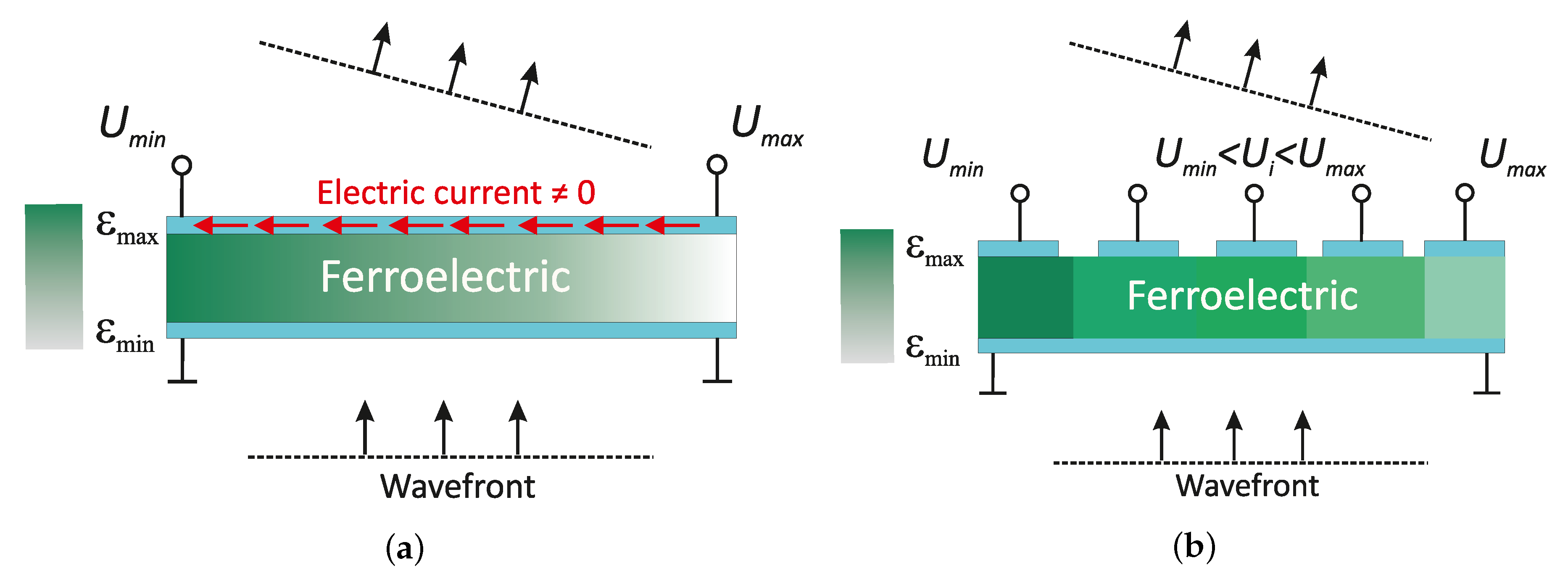
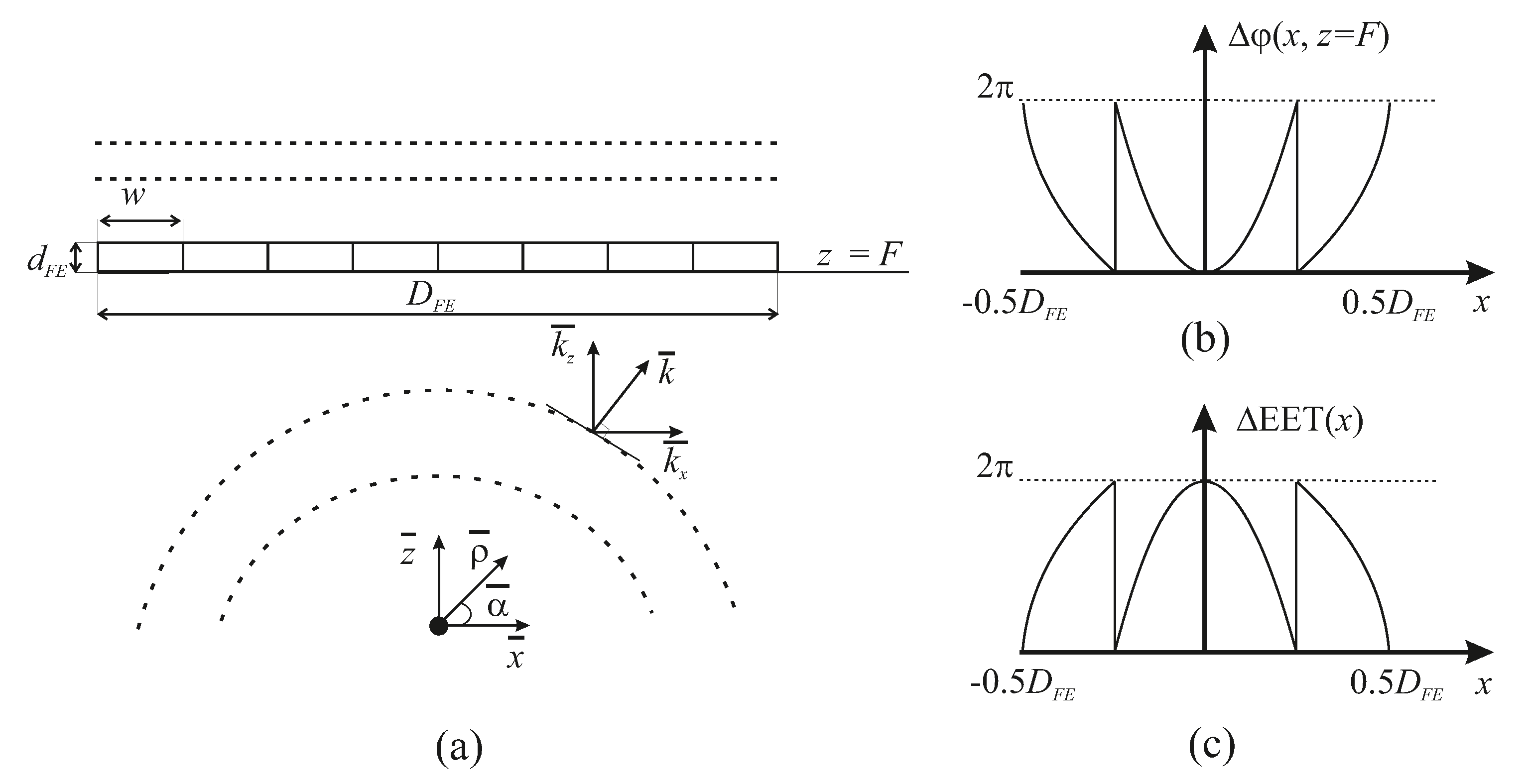
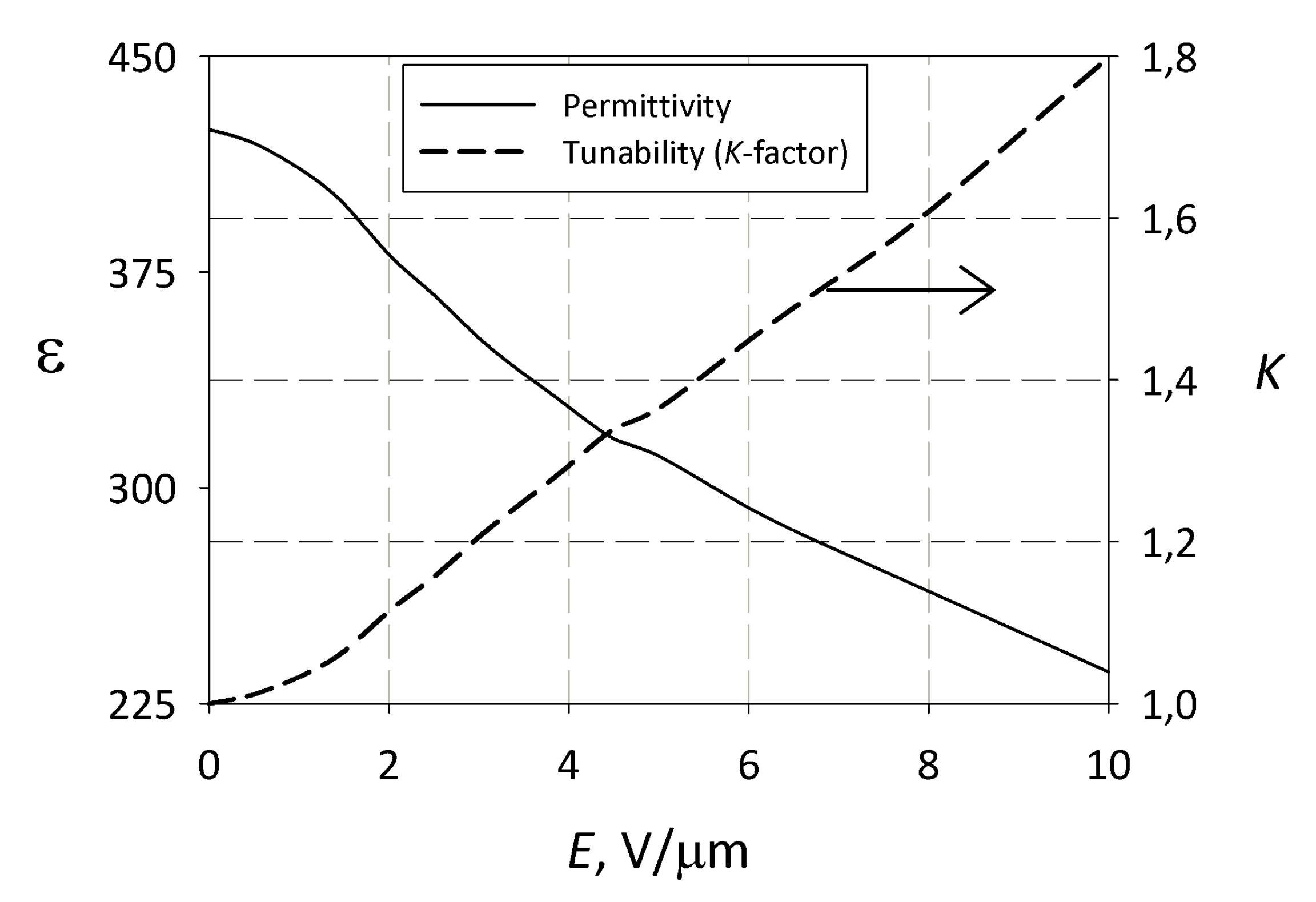


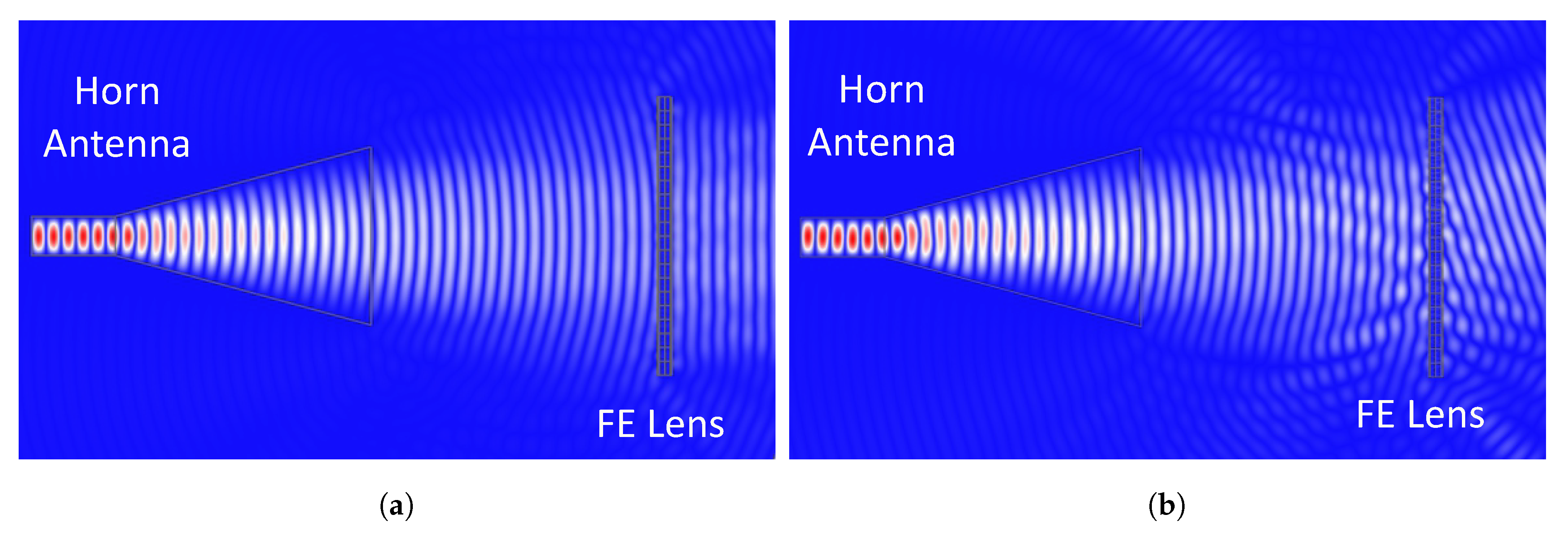
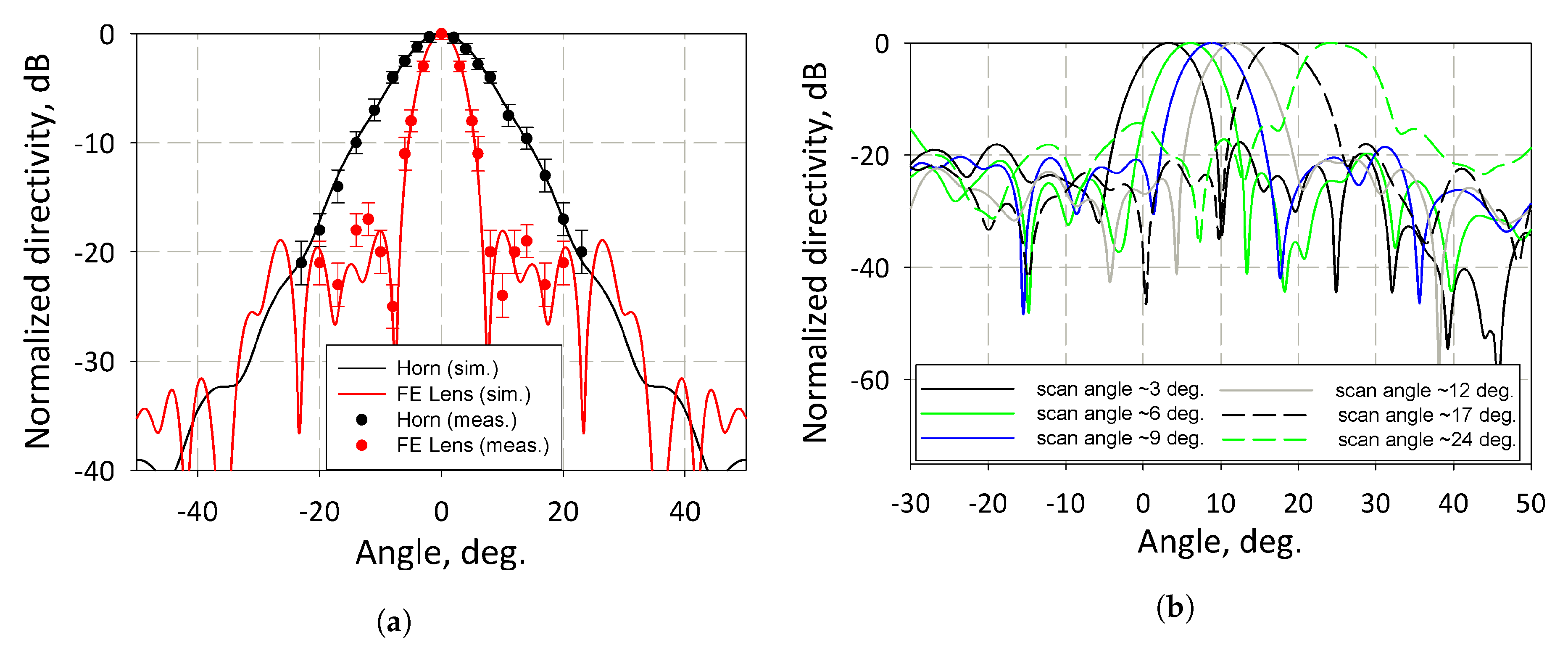
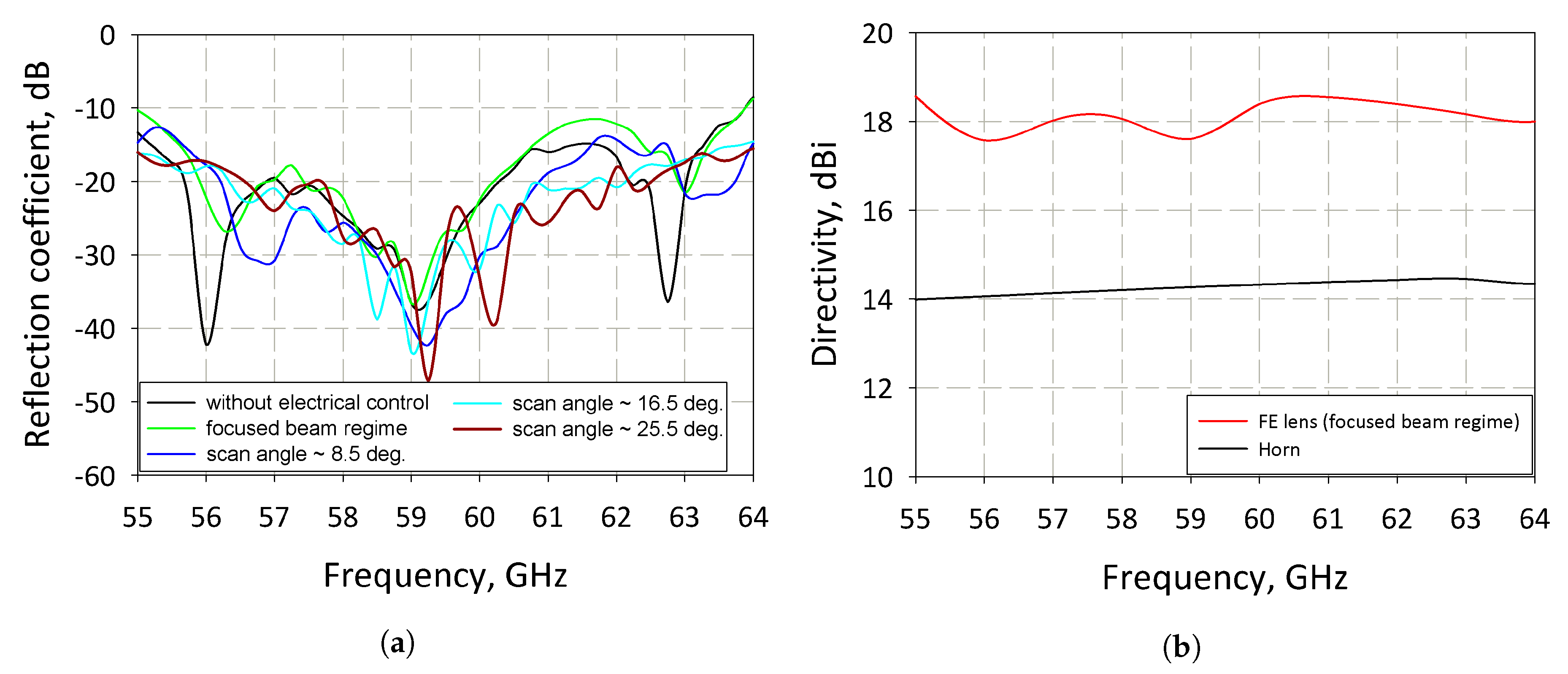
© 2020 by the authors. Licensee MDPI, Basel, Switzerland. This article is an open access article distributed under the terms and conditions of the Creative Commons Attribution (CC BY) license (http://creativecommons.org/licenses/by/4.0/).
Share and Cite
Platonov, R.; Altynnikov, A.; Kozyrev, A. A Tunable Beamforming Ferroelectric Lens for Millimeter Wavelength Ranges. Coatings 2020, 10, 180. https://doi.org/10.3390/coatings10020180
Platonov R, Altynnikov A, Kozyrev A. A Tunable Beamforming Ferroelectric Lens for Millimeter Wavelength Ranges. Coatings. 2020; 10(2):180. https://doi.org/10.3390/coatings10020180
Chicago/Turabian StylePlatonov, Roman, Andrey Altynnikov, and Andrey Kozyrev. 2020. "A Tunable Beamforming Ferroelectric Lens for Millimeter Wavelength Ranges" Coatings 10, no. 2: 180. https://doi.org/10.3390/coatings10020180
APA StylePlatonov, R., Altynnikov, A., & Kozyrev, A. (2020). A Tunable Beamforming Ferroelectric Lens for Millimeter Wavelength Ranges. Coatings, 10(2), 180. https://doi.org/10.3390/coatings10020180




